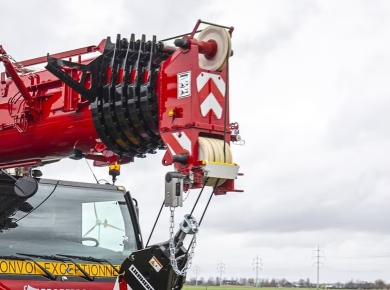The moment I stepped onto the construction site that day, the air was thick with tension. A recent incident had rattled the crew, a stark reminder of how quickly things can go wrong. As I surveyed the site, I couldn’t help but think about the importance of implementing NFPA 1500 standards in our safety protocols. This standard isn’t just a guideline; it’s a lifeline in an industry where the stakes are high, and the margin for error is razor-thin. For those of us in construction and site management, understanding NFPA 1500 can mean the difference between a safe work environment and a catastrophic incident.
The Core Principles of NFPA 1500
At its heart, NFPA 1500, or the Standard on Fire Department Occupational Safety and Health Program, is designed to prevent injuries and fatalities among firefighters and other emergency responders. However, its principles extend far beyond fire departments. For construction sites, the emphasis on risk management, training, and a culture of safety is crucial.
Risk Management
Implementing a robust risk management plan is essential. This involves not just identifying hazards but also assessing the likelihood and potential severity of those hazards. For instance, consider a site with heavy machinery—understanding the risks associated with equipment operation and ensuring safety measures are in place can prevent accidents. Regularly scheduled risk assessments can catch potential issues before they escalate, fostering an environment where safety is prioritized.
Training and Education
NFPA 1500 emphasizes the necessity of ongoing training. This isn’t limited to new hires; seasoned professionals can benefit from refresher courses that cover the latest safety protocols and technologies. For example, introducing virtual reality (VR) training can simulate real-life scenarios, providing workers with hands-on experience in a controlled environment. By investing in comprehensive training programs, organizations not only comply with NFPA 1500 but also enhance the overall competence of their workforce.
Creating a Safety Culture
One of the most significant takeaways from NFPA 1500 is the importance of fostering a safety culture within your organization. This goes beyond simply adhering to regulations; it’s about embedding safety into the very fabric of your work environment.
Encouraging Open Communication
Encouraging open communication about safety concerns creates an atmosphere where workers feel empowered to speak up. Regular safety meetings can facilitate discussions about potential hazards and encourage team members to share their insights. For instance, after implementing weekly safety huddles, one construction site I worked with saw a noticeable decrease in near-misses. Workers began to proactively identify unsafe conditions and suggest improvements, which not only enhanced safety but also boosted morale.
Recognizing and Rewarding Safe Practices
Recognizing individuals or teams who exemplify safety-first behavior can reinforce the importance of NFPA 1500 standards. A simple acknowledgment can motivate workers to prioritize safety. Consider implementing a recognition program that highlights safe practices and innovative safety solutions. This not only fosters a positive environment but also encourages a collective commitment to safety.
Compliance and Accountability
Navigating the complexities of compliance can be daunting, but NFPA 1500 provides a clear framework to follow. Establishing accountability measures is critical for ensuring adherence to safety standards.
Documentation and Reporting
Meticulous documentation is a non-negotiable aspect of compliance. From incident reports to safety audits, maintaining accurate records can help identify trends and areas for improvement. For example, after introducing a digital reporting system, a site I oversaw was able to track safety incidents more effectively, leading to timely interventions and improved outcomes.
Regular Audits and Reviews
Incorporating regular audits into your safety program is essential for compliance with NFPA 1500. These evaluations should assess not only adherence to safety protocols but also the overall effectiveness of safety measures. Taking the time to conduct routine reviews can uncover gaps in training or equipment that need to be addressed.
Leveraging Technology for Enhanced Safety
As we look to the future, technology will play an increasingly critical role in enhancing safety on construction sites. NFPA 1500 encourages innovation, and embracing new technologies can lead to significant improvements.
Wearable Technology
Wearable technology, such as smart helmets and health monitors, can provide real-time data about workers’ conditions and environmental hazards. For example, one site I consulted with implemented smart helmets that could detect falls or excessive heat exposure, triggering alerts to supervisors. This proactive approach not only ensured immediate assistance for workers but also reinforced the site’s commitment to safety.
Data Analytics for Predictive Safety
Utilizing data analytics can help organizations anticipate safety issues before they occur. By analyzing past incidents and near-misses, teams can identify patterns and develop targeted interventions. For instance, one construction company I worked with used data analytics to determine that certain tasks had a higher likelihood of accidents during specific times of the day. By adjusting work schedules, they were able to reduce incidents significantly.
Conclusion: A Commitment to Safety
Reflecting on the lessons learned from NFPA 1500, it becomes clear that safety is an ongoing journey rather than a destination. By embracing the core principles of risk management, ongoing training, and a culture of safety, we can create environments that protect our workers and ensure project success. The construction industry is evolving, and those who prioritize safety not only comply with regulations but also set the stage for a sustainable future. Let’s commit to making safety a priority today, for the benefit of our teams, our projects, and the broader community.


